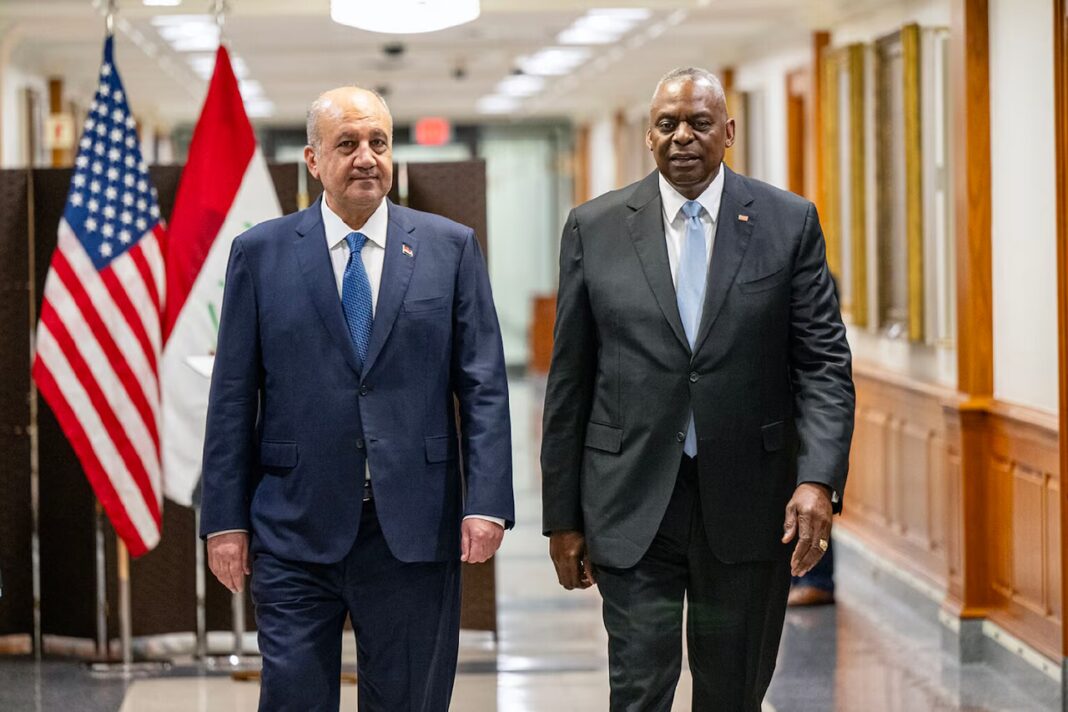The U.S. and Iraq are discussing how their future security relationship will look. These discussions are happening through the U.S.-Iraq Higher Military Commission (HMC). Right now, the U.S. has about 2,500 military personnel in Iraq. Their mission is to support Iraq in fighting ISIS. But as ISIS’s power fades, the U.S. and Iraq are rethinking this partnership.
Transition from ISIS Mission
The U.S. military has been in Iraq for years to help defeat ISIS. The global coalition to defeat ISIS was set up to keep the terrorist group from spreading. But now, discussions are moving toward what comes next. The U.S. wants to shift from a broad coalition to a more focused, long-term partnership with Iraq.
Air Force Maj. Gen. Pat Ryder, a Pentagon spokesperson, explained the current situation. He said the U.S. and Iraq are having important talks about the future. Iraq is a partner that we greatly value, Ryder stated. When it comes to stability and security in the area, they are crucial.
The U.S. sees Iraq as a key ally in maintaining peace, especially in fighting terrorism. Ryder added that the U.S. wants to give the HMC enough time to figure out the next steps.
The Role of the HMC
The U.S.-Iraq Higher Military Commission (HMC) was created to decide how this future partnership should work. The group started meeting earlier this year to make plans. One big focus is deciding how the U.S. military’s role will change. During these discussions, the HMC looks at different factors, such as how big of a threat ISIS still is and how capable Iraqi forces are at handling security on their own.
In August 2023, the commission was formed as part of the U.S.-Iraq Joint Security Cooperation Dialogue. Since then, the HMC has been working on planning a transition to a long-term, bilateral relationship.
Current U.S. Role in Iraq
As part of Operation Inherent Resolve, the United States presently maintains about 2,500 troops in Iraq. This mission’s main goal is to advise and help Iraqi and Kurdish forces in their fight against ISIS. Although ISIS is no longer as strong as it once was, it still poses a threat in certain areas. U.S. forces help make sure ISIS doesn’t come back by providing training, advice, and support to Iraqi and Kurdish security forces.
But as Iraq grows stronger in handling its own security, the role of U.S. forces is expected to change. U.S. and Iraqi leaders are discussing how to adapt the mission to current needs. The HMC plays a key role in shaping these changes.
What Comes Next?
A major question in the discussions is how long U.S. forces will stay in Iraq and what their future role will be. Secretary of Defense Lloyd J. Austin III plays an active role in these talks. According to Maj. Gen. Ryder, Secretary Austin will use the HMC’s recommendations to help make decisions.
According to Ryder, the secretary is undoubtedly extremely involved in any matter pertaining to the US military’s stance abroad. These decisions will also involve senior leaders in the U.S. and Iraq. Ultimately, both countries’ political leaders will have to agree on what comes next.
The Importance of the U.S.-Iraq Partnership
Iraq is a vital partner of U.S in maintaining stability in the Middle East. Iraq’s position makes it a key player in the fight against terrorism and in regional security. As ISIS becomes less of a threat, the U.S. wants to make sure that Iraq remains stable and secure.
The future of the U.S.-Iraq partnership is still being decided. However, both countries agree that they want to keep working together on security. The HMC will continue to play a major role in shaping this partnership. As talks progress, we can expect more clarity on how the U.S. role in Iraq will evolve over time.
To read the original news please visit DOD website

